
|
Wild Career - My Crowded Years of Adventure in Russia and the Near East. William J. Gibson,
George G. Harrap, London, Bombay, Sydney, 1935. Also published in North America by Lippincott, Philadelphia.
The author was an Anglo-Russian who grew up in St. Petersburg in the early twentieth century. At the
outbreak of the great war, he and his German fiancée found themselves outcast by both British
and German communities, a problem solved by his serving as a volunteer in the Czar's army. There follow
exciting tales of motorbikes and armoured cars, ending up with the revolution and the collapse of the
Imperial Army. Meetings with Lenin and escapades with the Cheka (secret police) enlighten things further,
before Gibson finally makes it to England, where he serves as an Intelligence officer in the Air Ministry.
After the war he sets himself up in Istanbul where further adventures follow in the turmoil of the early
twenties, following collapse of the Austro-Hungarian, Russian, and Ottoman empires, and the realignments
that followed.
It is fairly easy to obtain a copy of this book from second-hand booksellers, but so far I have not
found one with a dust-jacket. If someone has a copy, a scan would be very welcome.
|
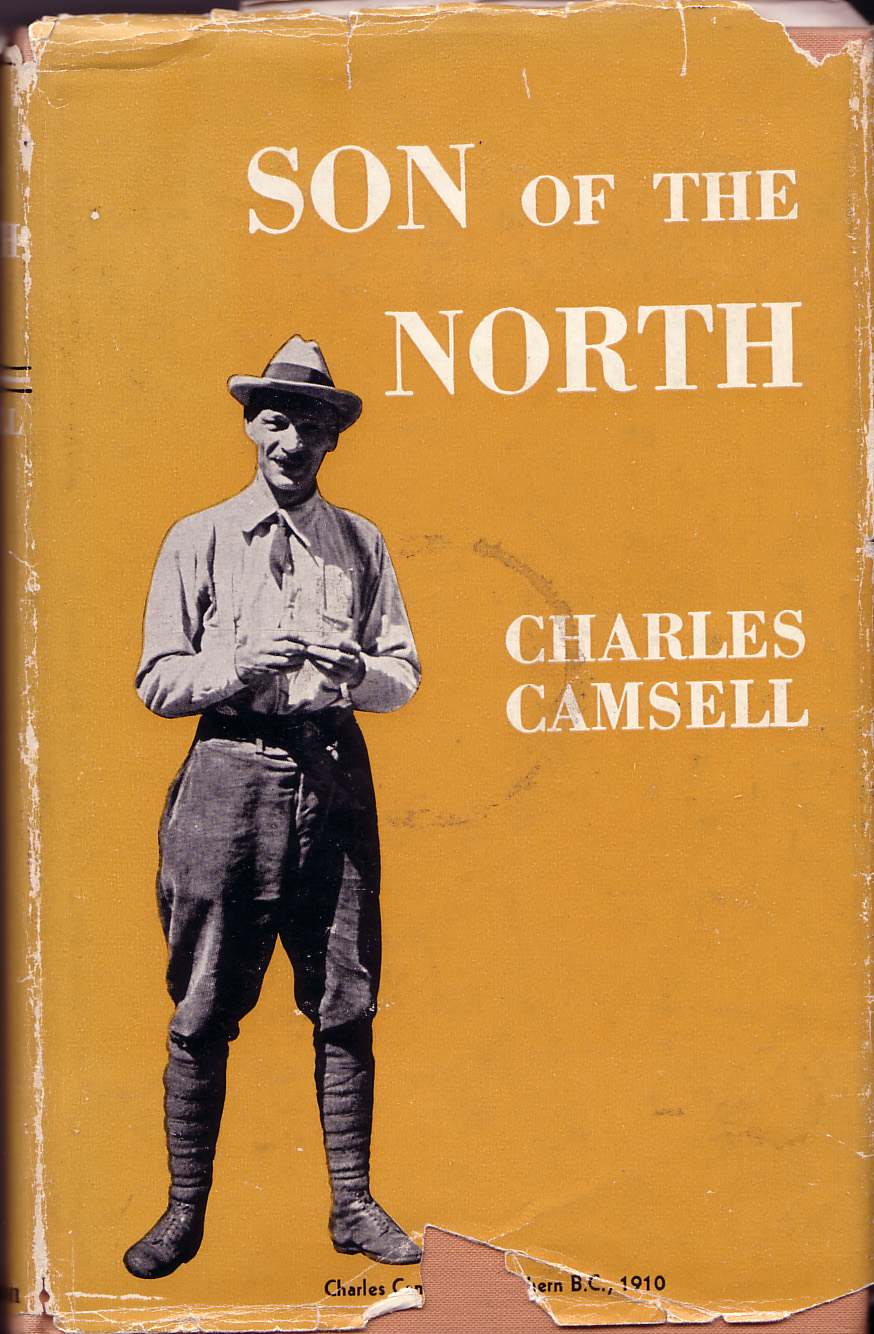
|
Son Of The North, Charles Camsell, Ryerson Press, Toronto, 1954.
Charles Camsell was born in 1876, in Fort Liard, a fur trading post in Canada's
Northwest Territories. This book is his autobiography, telling how he grew up in a small,
isolated community, and then went on to become an explorer and prospector, being
caught up in the Klondike gold rush. After a formal training as a geologist he mapped
the mineral resources of Canada's Northlands, and became Deputy Minister of Mines and
Commissioner of the Northwest Territories.
On page 106 we discover that he spent the winter of 1899 - 1900 at Fort Wrigley in the
company of Christy Harding - the Hudson's Bay Company representative, and six Indians. They
saw nobody else for five months, until the spring came, as the nearest neighbours were
150 miles away.
Christy Harding spent the whole of his life, up until retirement, working for the Hudson Bay
Company, being posted to one isolated settlement after another. Although this book only
includes two or three pages about Camsell's time at Fort Wrigley, I think it gives an enthralling
picture of life in the frozen North, which must have been very similar to that enjoyed by Christy.
On a slightly strange footnote, Christy Harding later married Cecilia Camsell, and thus
became Charles' brother-in-law, but there is no mention of this at all.
|
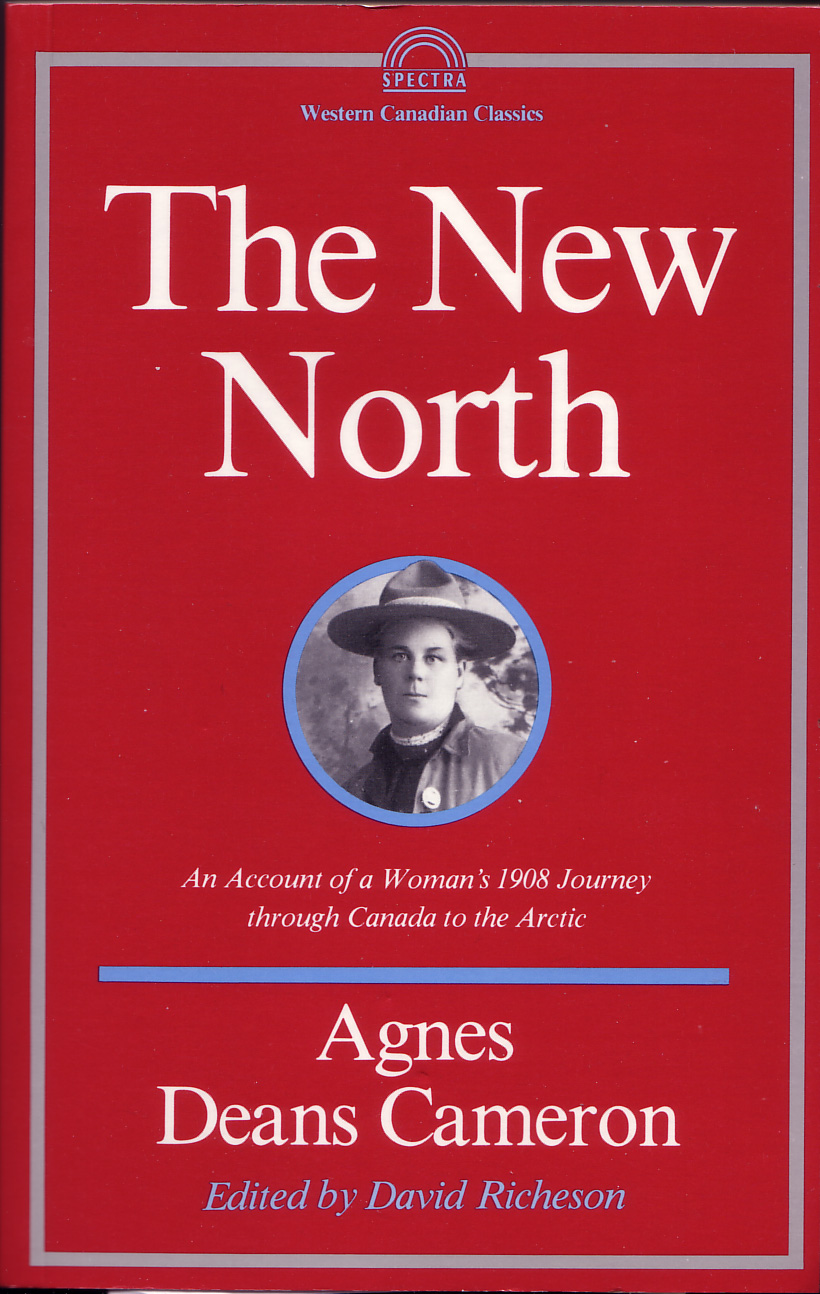
|
The New North Being Some Account of a Woman's Journey through Canada to the Arctic, by Agnes Dean Cameron.
First published by D. Appleton, New York and London, 1912. Reprinted 1987. Also available in digital form through
the Project Gutenberg, or click here to read
a local copy.
Agnes Dean Cameron (1863-1912) was a famous pioneer of women's suffrage from British Columbia. She was B.C.'s first
female high school teacher and then first female school principal (1894). Her support for women’s equality led to friction
with school administrators, who dismissed her in 1906 for a minor infraction.
Following this she undertook an amazing journey through Canada's Northwest, up as far as the Arctic. The story of this epic
journey is illustrated by the many photographs she took along the way. Like Camsell's Son of the North, this book is a
wonderful tale of the hard life experienced by the Indians and fur traders in the far North, but of particular interest
is her meeting up with Mrs. Harding, returning to Fort Resolution following a visit to her mother in Winnipeg. This of
course was Cecilia Harding, wife of Christy Harding, who was by now a Hudson's Bay Post Manager.
|

|
The Arctic Prairies A Canoe-Journey of 2,000 miles in search of the caribou; being the account of a
voyage to the region north of Aylmer Lake, by Ernest Thompson Seton. First published by Scribners, 1911. Modern
reprints are available, e.g. from Cosimo (ISBN 1596055332). Also available in digital form through the
Project Gutenberg, or download a local copy in text
or PDF formats.
Seton was an Anglo-Canadian (and later naturalised US citizen) best known for his works as an author, naturalist
and wildlife artist. He was also a pioneer of the scouting movements, his early works on woodcraft having great influence
on Baden-Powell, with whom he corresponded for several years.
In 1907 he undertook a 2000 mile canoe journey in Canada's Northwest, which is the subject of this book. This occurred
at much the same time as Agnes Cameron's travels in the north, and the book provides an interesting comparison. Along the
way there are several encounters with Christy Harding, of Fort Resolution, and other officers of the Hudson's Bay Company.
|
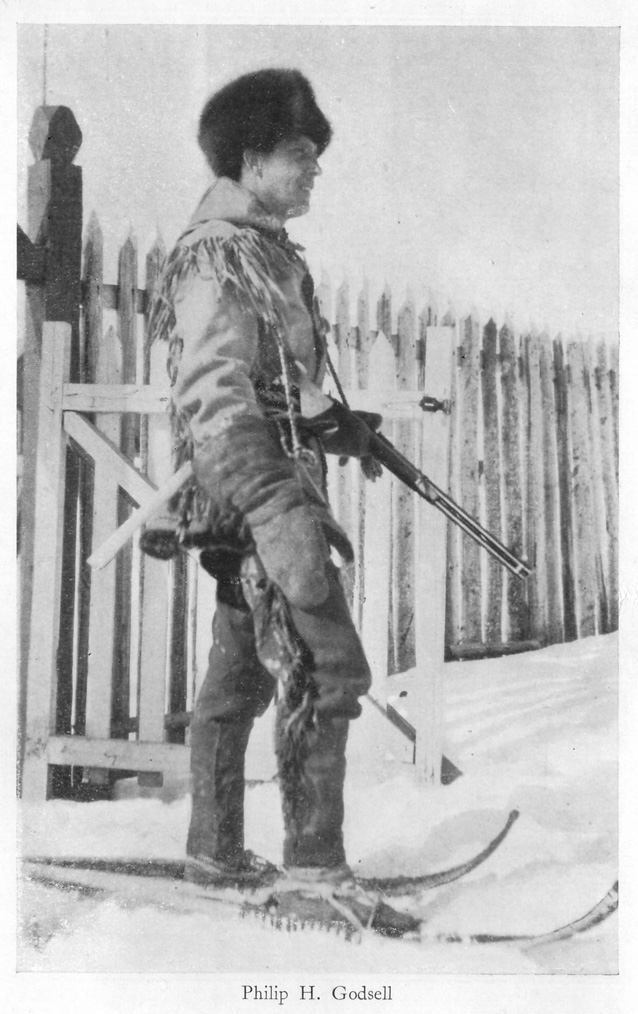
|
Arctic Trader The Account of Twenty Years With the Hudson's Bay Company, by Philip H. Godsell.
First published by Robert Hale Ltd. of London, 1935.
Julian Godsell worked for the Hudson's Bay Company for twenty years or more, from 1906, and spent most of this
time in the North. Godsell knew Christy Harding and he gets several mentions in this memoir. For example, this is
from the description of the HBC 250th anniversary celebrations:
"Chris Harding, veteran of the Arctic who had carried the red flag of the Company to the land of the unknown and
savage Cogmollock Eskimos of Victoria Land."
In addition, this is an entertaining story of the hard life and colourful characters of the Northwest Territories, Yukon
and Arctic regions.
|
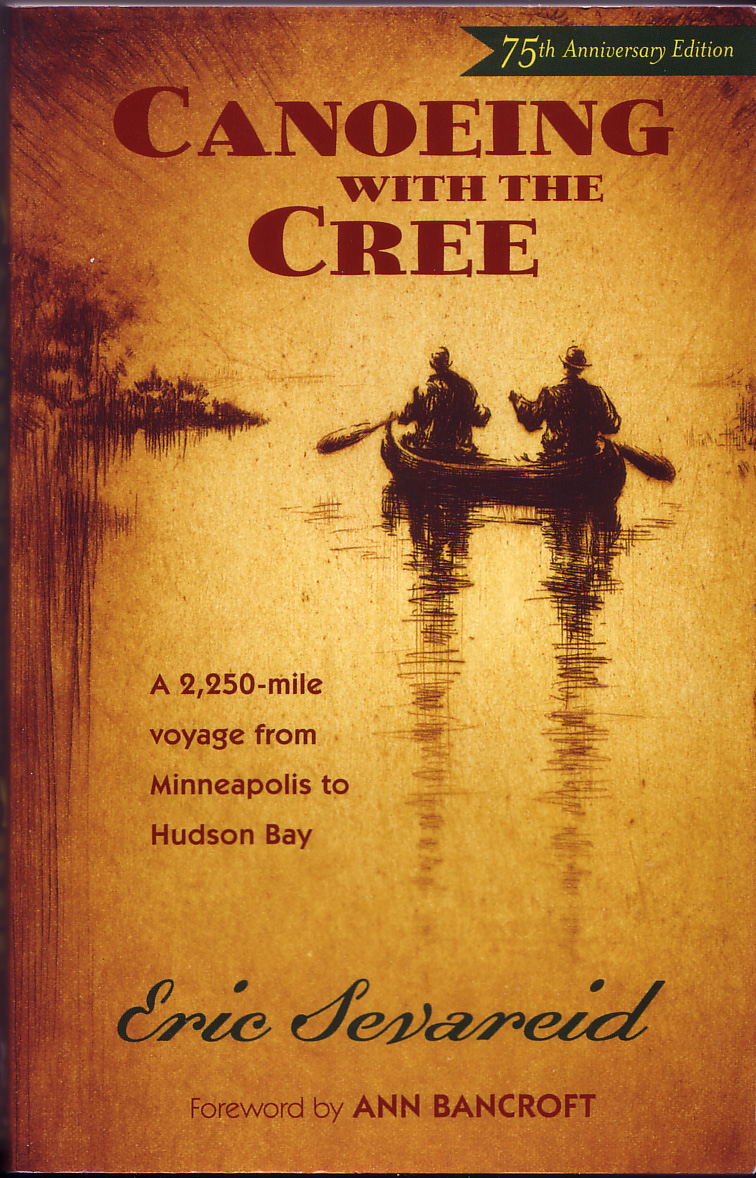
|
Canoeing With The Cree, by Eric Sevareid. First published in 1935. Modern reprinting by Borealis
Books (Minnesota Historical Society Press), ISBN 0-87531-533-1. Also available in digital form at the
Library of Congress.
In 1930 two novice paddlers - Eric Sevareid and Walter C. Port - launched a secondhand 18-foot canvas canoe into the Minnesota
Rover at Fort Snelling for an ambitious summer-long journey from Minneapolis to Hudson Bay. Without benefit of
radio, motor, or good maps, the teenagers made their way over 2,250 miles of rivers, lakes, and difficult portages.
Nearly four months later , after shooting hundreds of sets of rapids and surviving exceedingly bad advice, the ragged,
hungry adventurers arrived in York Factory on Hudson Bay - with winter freeze up on their heels.
In the growing dusk, buildings came into view on the left embankment. This was York Factory, site of the greatest of
all trading posts a century ago, port of entry for thousands of pioneers. Here warships of England and France had fought
for the great fur country through which we had just come. A few dogs yelped at the sight of us; a few Indians peered
curiously over the banks... Our benumbed legs buckled under us and we nearly fell. That day we had paddled the canoe
sixty miles... We staggered up the steps, ... frozen fingers pounded the heavy door. It was jerked open by a tall,
heavy-set, mustached man.... "Factor Harding?"
|
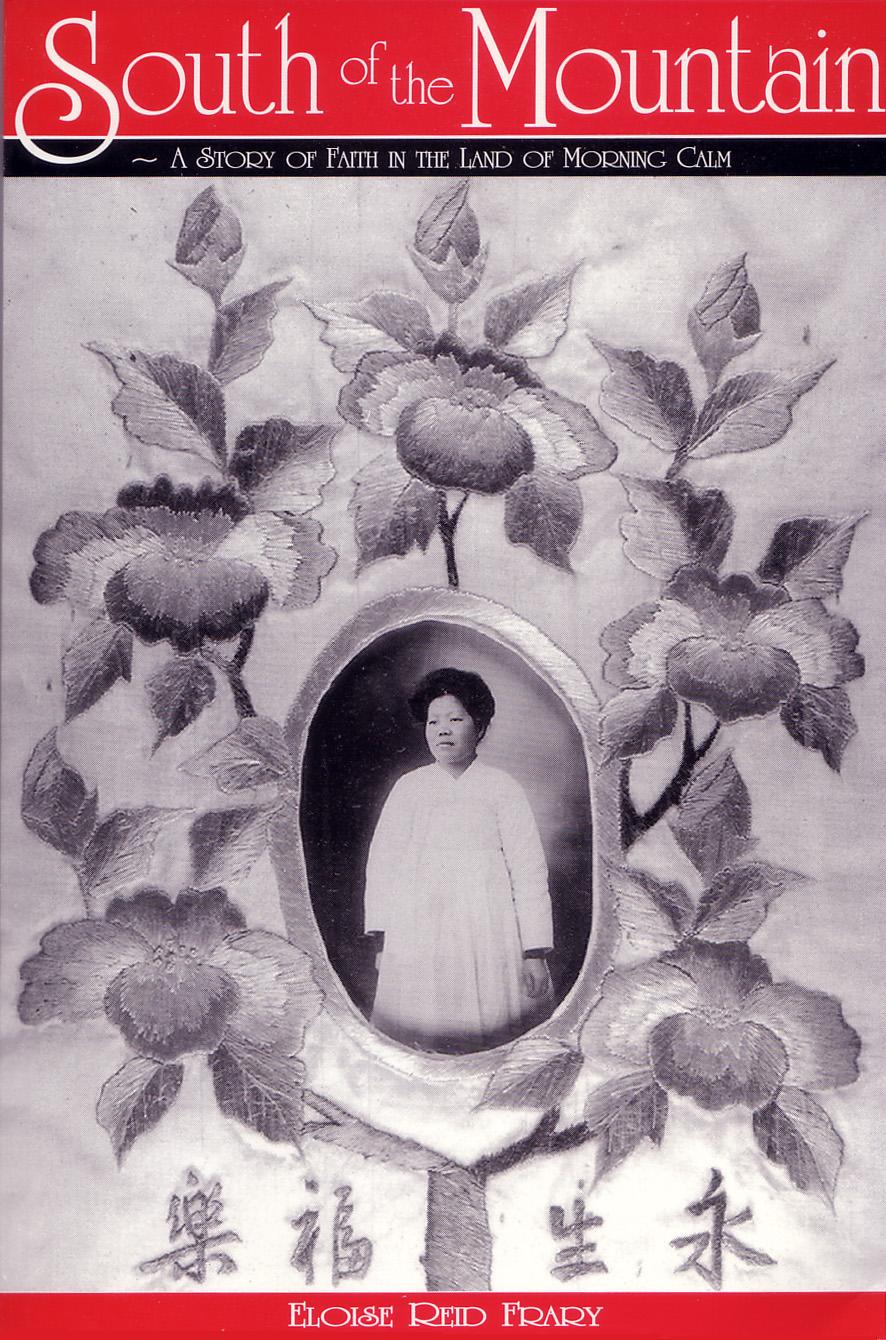
|
South of the Mountain - A Story of Faith in the Land of Morning Calm. Eloise Reid Frary.
Dorrance Publishing Co., Pittsburgh, Pennsylvania, 2000. ISBN 0-8059-4815-5.
It is 1908, two years before the occupation of Korea by Japan in 1910, and the Reverend Wightman
T. Reid, M.D. is struggling to carry out his assigned responsibility: establish a missionary
hospital at Song-do (Kaesung), Korea.
Under the most primitive of conditions, the missionary doctor conducts his first major operation.
His patient is a fourteen year old girl from a village near Songdo, who is deathly ill from the presence
of a "devil" in her back. Little does Doctor Reid know that the girl he saves this day will return
to the mission station to complete her education, become a member of a team of Koreans, evangelize
a large area of central Korea, and establish twenty-four Methodist churches.
The author, Eloise Reid Frary, was born in Seoul in 1911 and lived in Korea until 1928. She was the
daughter of missionary parents, Dr Wightman Reid and Sidney Mary Williams, a trained nurse.
|
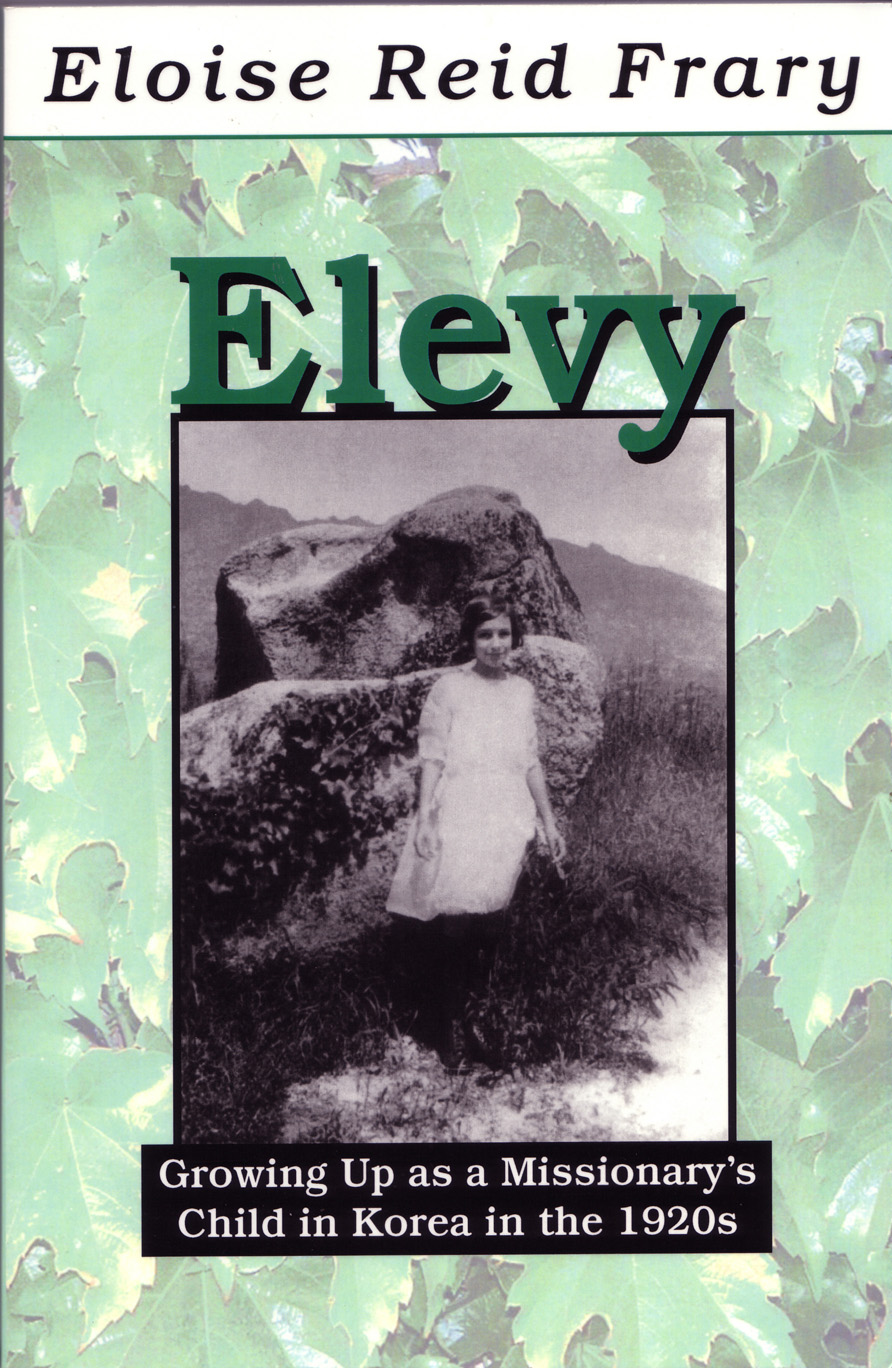
|
Elevy - Growing Up as a Missionary's Child in Korea in the 1920s. Eloise Reid Frary.
Biltmore Press, Asheville, North Carolina, 2007. ISBN 0-6151-4319-9.
This is the true story of Elevy - Eloise Reid - and covers the years 1923 - 1928, when the Reids left
Korea and returned to America. It describes the life of the Reid family, running the mission hospital in
Song-Do.
It was the author's second book about Korea and neatly complements South of the Mountain. Although
written in the 1940s it was eventually published in 2007 by her daughter, Sidney.
These books by Eloise Reid Frary can be found via the usual online booksellers.
|

|
Journal Of A Residence Among The Negroes In The West Indies. Matthew Lewis. First Published 1845,
current edition by Nonsuch Publishing Ltd, Stroud, 2005, ISBN 1-84588-037-4. (Publisher now defunct).
This book describes the author's visits to his estates in Jamaica in 1815-16 and 1817, after the
abolition of the slave trade, but before emancipation. The author was an opponent of slavery, although
he did not campaign for its abolition, instead working to improve conditions for the 400 slaves who worked
on his estate. This, together with his friendship with William Wilberforce, made him unpopular with
other plantation owners.
Written in an engaging and witty style, Lewis' journal provides a fascinating account of life
on a Jamaican sugar plantation during the period when the abolition of slavery in the British
Empire was an important political issue.
There is a brief mention on page 112 of Mr Williams,
"a neighbouring magistrate". I have not yet identified which Williams this was. Not mentioned
in the book, are connections between the Lewis and Williams families going back to the 1670s
(for example Lewis Williams m. Priscilla Lewis around 1680) – Matthew Lewis was a descendant of
these early Lewis settlers.
|
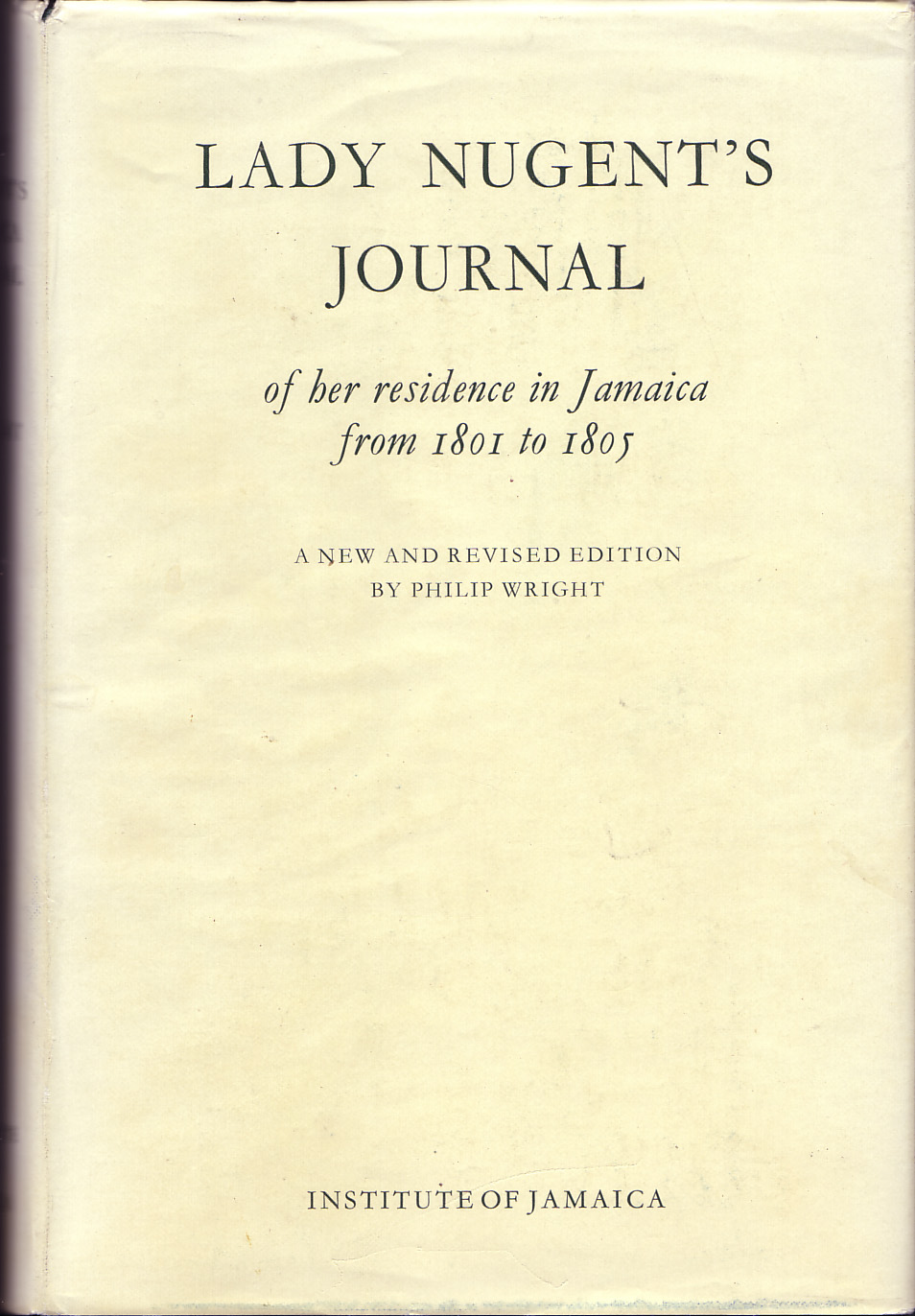
|
Lady Nugent's Journal of her residence in Jamaica from 1801 to 1805, by Maria, Lady Nugent.
First Published 1907, Fourth Edition revised and extended by Philip Wright. Institute of Jamaica, 1966.
A new paperback edition was published in 2002 by
University of the West Indies Press,
Kingston. ISBN 976-640-128-4.
"Lady Maria Nugent's Journal, written during her stay on the island from 1801-1807 as the wife of Governor General
George Nugent, is perhaps one of the most intriguing primary sources of Jamaican history available today. Recently
re-released by the UWI press, Lady Nugent's Journal, clearly unintended for publication and written without literary
pretensions, provides an insight into domestic life in early nineteenth century Jamaica.
Jamaica was an enigma to Lady Nugent. Although many of her references are to her love for her husband and children,
a good portion of the journal documents her attempt to come to some understanding of the unique form of society she
encountered. This interest led her to go beyond trivial comments such as "only our family at dinner tonight," and "to bed
at eight" to provide actual documentation of the cultural impact of Empire on colonial administrator/colonizer and slave.
As such her journal stands as much more than a record of her personal life. It contains an anthropological slant that is a
rare find in primary sources. "
Full article by Dr. Rebecca Tortello is available at the
Jamaica Gleaner.
Like Matthew Lewis's journal, this book provides a fascinating description of life two hundred years ago, with its tales
of privilege and deprivation. In this case however, there is more material of a personal interest. Maria Nugent's brother
Jonathan Downes Skinner, was married to Elizabeth Williams, daughter of Lewis Williams of Luana. Mrs Skinner is frequently
mentioned, along with her daughter Bonella Williams, and sister Mary Williams. On one occasion they attend a sermon given by
the Rev. Raby Williams, and Mrs Skinner often travels to Kingston to visit her relatives there. Finally, there is a map of
plantations including one attributed to the "Williams's".
|
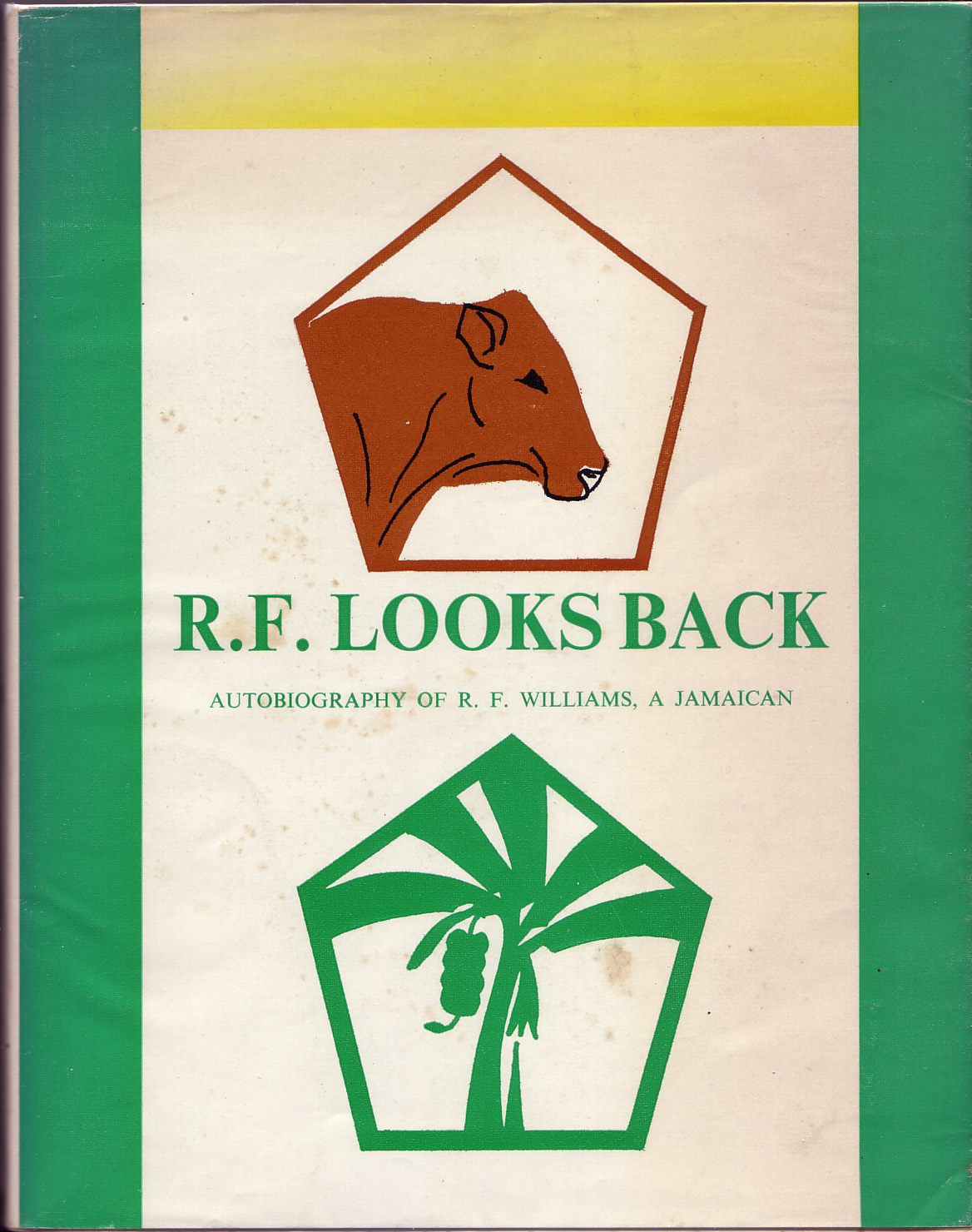
|
R.F. Looks Back Autobiography of R. F. Williams, A Jamaican. Written and privately published by R.F. Williams, 1972.
Richard Farewell Williams was a distant cousin from another branch of the Williams family, also well embedded in
Jamaican history. He was a descendant of Rowland Williams' eldest son Joseph (1702-1732) whereas the main line of interest
on this website traces descent from the second son Lewis (1703-1770). The first chapter discusses family history and is a very useful
source of background information as well as providing additional confirmation for some of the earlier genealogical data.
Williams was a renowned agriculturalist, with interests in cattle and bananas. As well as managing his own farms he
also served in a number of capacities at national level, making for a very interesting book about the development of
Jamaica's agriculture and economy during the 20th century.
|
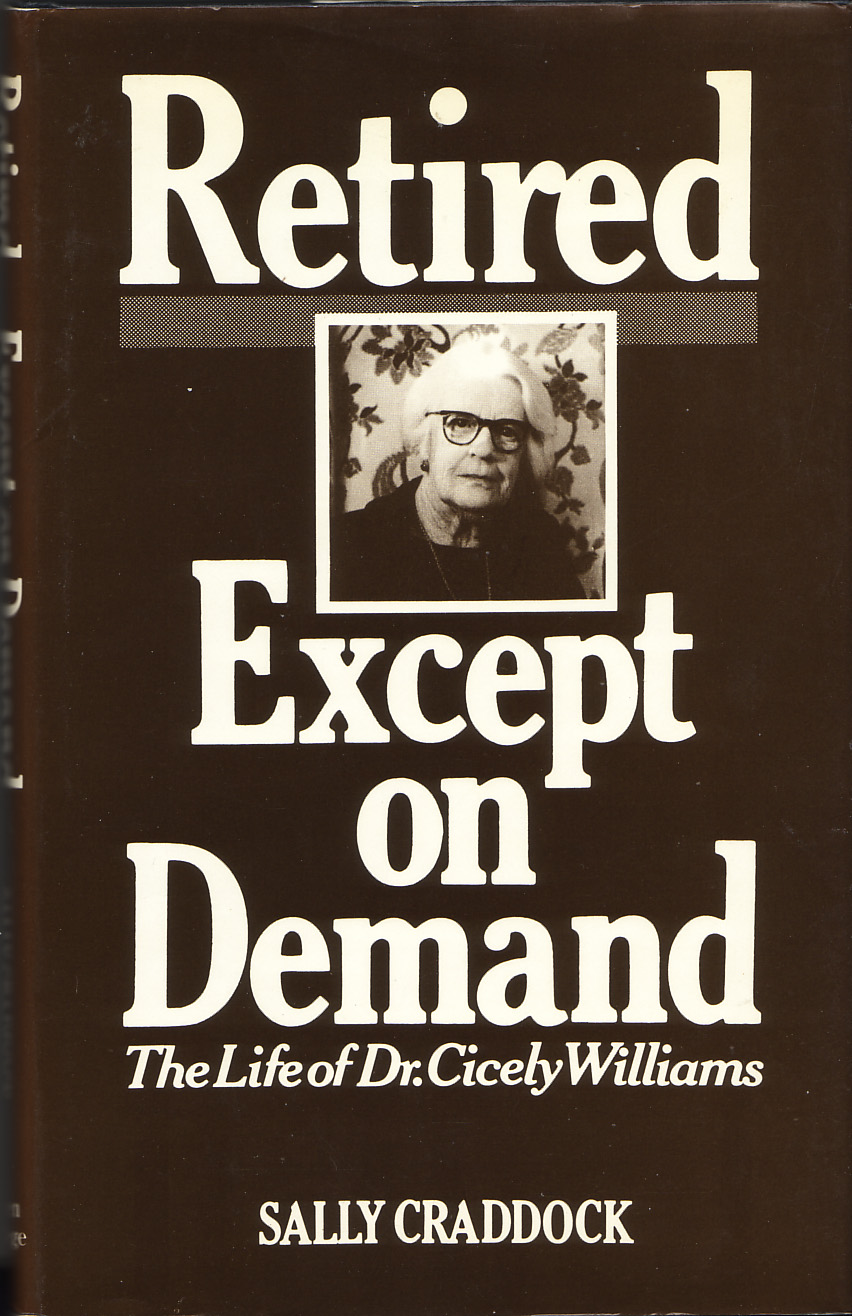
|
Retired, Except on Demand The Life of Dr. Cicely Williams. Sally Craddock, Green College, Oxford, 1983.
Dr. Cicely Williams was probably the most famous member of the Williams family, at least in recent times. She was
the sister of R.F. Williams, and thus a distant cousin also. She was one of the first female graduates of Oxford
University and her subsequent training as a paediatrician was followed by work in London's East End, Greece, and
West Africa, where she identified the condition kwashiorkor, associated with malnutrition. She went on to
Malaya where she initiated the Milk and Murder campaign against infant food manufacturers (notably Nestlé).
Following the Japanese invasion she was interned for three and half years in Singapore's notorious Changi prison.
The post-war years saw her continue her work as head of Mother and Child Health at the World Health Organization
in Geneva.
|











